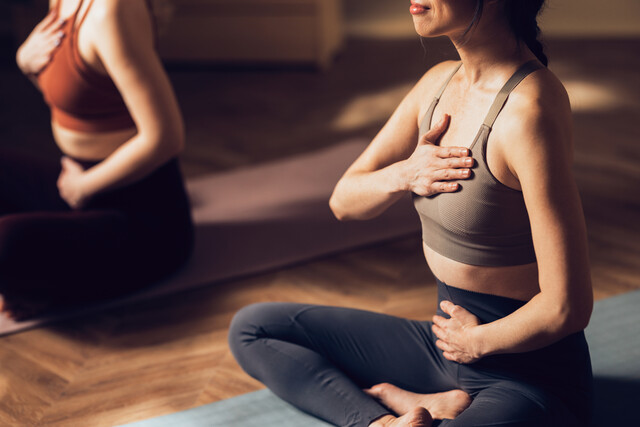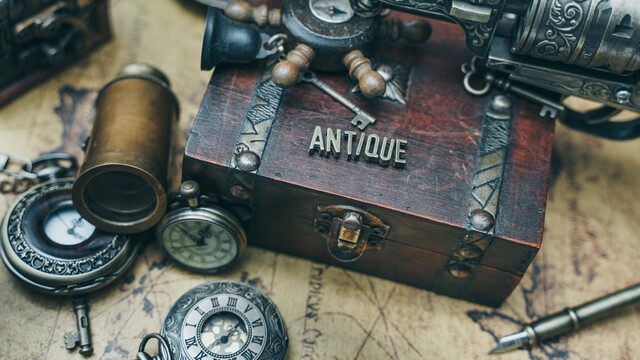History of Nail Care
Did Cleopatra Manicure?
She sure did. Cleopatra's nails were painted red and Queen Nefertiti's nails flashed violet. The word manicure derives from Latin: manus for hand, cura for care. Believe it or not people have been manicuring their nails for more than 5000 years. Nobility in Babylonia used solid gold tools to mani-pedi. According to a Ming Dynasty manuscript, nail polish has a history dating back even further, to 3000 BC when nail color indicated one's social status. Royalty painted their nails black and red; the Egyptians used red to designate the highest social status; military commanders in ancient Egypt and Rome were known to paint their nails to match their lips before going off to battle. Before nail polish was around, people in India, used henna (a brownish red substance) for their manicure.
What Does a Manicurist Do?
Probably the biggest outlay of every woman, next to her car and home, is clothing, health and beauty products and treatments. It's not because there is such a gender difference that most men don't have mani-pedis, shop until they drop, or don't have a secret desire to get rid of all that hair on their backs, it's a masculinity thing that gets in the way. Secretly, I think men appreciate looking at a healthy well-groomed woman who does her best to bring out her natural beauty. That doesn't come cheap. Many women will spend a week's wages on her hair-dresser and manicurist. Why so much? Let's take a look at what a manicurist does.
Besides owning two good ears and listening skills, manicurists are licensed Nail Care Specialists (or Nail Technicians) who treat the hands and feet. A standard manicure of the hands must always begin by ensuring that the work area and nail tools are freshly sanitized for each client, conveniently located and there is proper lighting. A manicurist should own basic manicure tools and supplies such as:
- Bowl of clean, warm water for a finger bath
- Nail clippers (all metal tools should go straight into disinfectant after use).
- Cuticle pusher/hoof stick
- Cuticle knife and clippers (common practice is to not cut back cuticles). The cuticles are the body's best defense from infections and diseases of the nail. A well-informed and trained manicurist will debris dead skin and hangnails and push back cuticles with a tool such as an orange stick.
- Nail file, emery boards and buffer
- Scissors and nail brush
- Orange stick
Because skin is manipulated and sometimes trimmed, there is a risk of spreading infection or fungus when the same unsanitized tools are used on many people. This is a serious issue and requires the professional to sterilize between clients or have more than one set of tools on hand. A new emery board or buffing block should be used on each client.
Many manicurists use a melted paraffin wax treatment on the hands for softening and moisturizing. There is no telling how many people have dipped their hands into the paraffin before you. A tube of Gold Bond cream may work just as well without the risk of catching someone else's something.
Additional supplies are also part of manicuring:
- Cuticle remover - This is caustic and must be rinsed off the skin after use.
- Oil � Necessary for a hot oil manicure. This softens and cleans the cuticles. It works well for brittle nails and leaves them soft and more pliable. Oils can be mineral oil, olive oil or almond oil and is usually prepared in an electric heater.
- Massage lotion � Used to massage the hands and removed from the nail beds before applying polish. This is a good treatment to relax the hands and the client before the polishing treatment.
- Nail polish � The layers include base coat (possibly ridge filler polish), colored polish and top coat or sealant. Women are known to be finicky about their choice of nail color. One manufacturer, sorry, cannot divulge, is considered to be a favorite of many. Although the manufacturer does not have the benefit of a designer cosmetic line, it is considered to be top of the line for several reasons: New colors are released every season to keep their line trendy and fashionable. They invent colors and styles no other nail polish manufacturer comes close to. Mini collections are released with each new line so the user doesn't waste old, left-over polish. A manicurist can expect certain clients to bring their own polish for touch-ups between manicures.
- Nail stick-on jewels for decorating the nails (optional) ? Many professionals use air-brushing nail equipment to give the finished manicure a more artistic look (photo)
- Nail polish remover � recommended usage is no more than twice per month
- Sanitizing spray and Purell or the equivalent hand sanitizer. Manicurists must clean, and sanitize hands between clients
- Clean towels for every client
- Cotton balls
- A manicurist's license should be current and visibly displayed.
Before starting the manicure, a nail specialist should examine and analyze the client's nail care needs and discuss the recommended treatments and products with the client. Certain people have allergies and this is a good time to ask. Most professionals have cards completed for all their clients listing their phone numbers, allergies, etc.
Manicurists should keep abreast of new skills and products by continuing education and manicure product representatives.
Your Nails Can Make or Break a Look
Your hands speak for you. Meeting a tastefully dressed and otherwise well-groomed person who has dirty fingernails makes you wonder ? why all the time and expense on appearance and not have clean nails? Something as minor as that can make or break a job interview. There's that old excuse: "I don't manicure my nails because the right hand never turns out as good as the left, or vise-versa." If you really dislike doing a home manicure, see a manicurist before your big appointment or event.
If someone puts out a nasty hand to be shaken, there's always that moment of hesitation. But if you gesture toward the other person with a clean, manicured hand, the response is instantaneous. Nowadays there are many different opinions about how hands should be groomed when going on job interviews, but here are some sure-fire tips that may land you that dream job:
- Nails should be slightly rounded or squared and medium to short in length (about 1"2 inch in length, no dragon lady nails).
- Its fine to wear polish, but the shade should be clear or a non-threatening color. A French manicure is acceptable, but red or black polish, air-brushing or stick-on jewels tend to distract the interviewer. The focus should be on you not the hot-pink and purple you are waving around.
Nothing gives your age away faster than discolored skin tissue. Age spots are also the skin's way of telling you there is deeper damage below the skin. That means if you had taken better care of your skin, you probably wouldn't be dealing with age spots. But all is not lost, there are some fine fixes out there.
Alpha Hydroxy Acid or Glycolic Acid has been shown, with regular use, to produce visible changes in the appearance of aging skin. This treatment can be purchased in the form of a cream or gel and can be applied at home.
A stronger mixture of Glycolic Acid can be applied by a dermatologist to fade the age spots. Laser is also being used with good results. Neither of these treatments can be accomplished in one visit and they can be costly.
Using sunscreen of 30 or more can dramatically decrease the possibility of having age spots in later years. Of course, any abnormal growth or irregular shapes should be examined by a physician. This may indicate early skin cancer or melanoma. A manicurist does not normally apply these topical treatments as part of their client service, but may be able to suggest products that have a good success record.
There is another plus to doing your own manicure ? when your polish is chipped, you can do a polish change at home and if you break a nail, well, you can file it down and make do until it grows out. Back when I wore artificial nails, I broke one of my Tammy Taylor artificial nails and I was miserable until I could get in to see my much-in-demand manicurist. Today I don't have time for salon nails, but I do treat myself to a professional manicure when necessary because my nails have never been the same since the Tammy's were removed.
A good idea is to keep your home manicure kit well stocked and your tools sanitized. That way if you decide to have a professional manicure, you can bring along your own sanitary tools, polishes and you can upgrade the kit to whatever you prefer. You can find most of what you need in a beauty supply store. Your kit should also contain the basic tools of the trade:
- Cotton balls or cotton rounds � The rounds are better for removing polish
- Different textured emery boards � Some are harsher than others. If you do your own pedicures, the gritty ones are better for toenails.
- Orange stick � These are gentler for pushing cuticles than the metal tools. They're also helpful to remove polish goofs from your skin.
- Cuticle Nipper � In the beginning, use only if necessary to remove a hangnail until you gain more skill using nippers without cutting your cuticles. It's hard to know how much dead skin to remove and the lefty-righty problem makes using them riskier by cutting too deep. Paying extra for a high-quality pair is well worth it. If you know of a shop that sharpens knives, they can also sharpen your nippers when they turn dull.
- Cuticle remover � Again, this is caustic. Try a warm water soak first. If you must use the remover, soak your hands in warm water with a little mild soap and a drop of your favorite essential oil as soon as possible afterwards.
- Cuticle oil � Can be used on polished or naked nails. A good quality oil by Melvco, Inc. is Haken. It lasts forever and has almond and apricot oils, vitamins A, D and E.
- Moisturizer cream or lotion � Massage into your hands liberally, but remove from the nails before applying polish. Alpha Hydroxy cream at night helps skin renew.
- Pumice stone/foot file or synthetic pumice � It helps to keep pumice in the shower or bath and use it regularly, even if you do get frequent pedicures.
- Polish � A good base coat, two coats of nail color and top coat are all that's needed. If you do not use polish, buffing your nails brings out the shine. When doing a polish change on your acrylics, a less expensive polish will do nicely. A higher quality polish is best for natural nails.
Exercise
You may already have some of your manicure tools on hand. If not, purchase what you need for your home manicure. You don't have to spend a lot of money (save it for a good nipper). Dollar stores may offer emery boards, cotton, polish remover and orange sticks. Check out the beauty supply store. They have trained people to help answer your questions about product. Many drugstores have two for one and periodic specials on manicuring products. A small plastic container with three drawers (Wal Mart) is great for holding your manicure tools because you can organize.
Problem Nails and Solutions
The photo depicts a dry, brittle nail with ridges. Ridges on the nail are unfortunately mostly genetic. While mind-blowing breakthroughs are being accomplished in genetic research, nail ridges are not yet a priority. But there are some steps you can do to help this condition. You can use a buffer and buffing cream to smooth the nail ridges. If this is a recent condition, nail ridges could be an indication of anemia and you should see your doctor. When manicuring your nails, be gentle on them. Too much pushing or pressure can cause ridges or white spots. Generally, the white spots will grow out.
There can be many causes for brittle nails. Women suffer more from dry, brittle nails than men. Reasons can be:
- Iron and zinc deficiency
- Certain nail polishes
- Harsh detergents and cleaning products
- Regular use of polish removers (no more than three or four times per month).
- Dehydration from lack of moisturizer
- Nails repeatedly in water
- High and low temperature changes
- Poor health
- Aging (as skin becomes dryer in the elderly, so do nails).
Surprisingly, with all the dry, brittle nail treatments lining the shelves, this condition can be difficult to treat. It's also tricky to decide which treatment is best for you. The longer one has dry nails, the harder they are to treat. Keeping polish on the nails often helps the nails from dehydrating and catching on things. After soaking nails in warm water, use a moisturizer containing Alpha Hydroxy acid. A hot oil brittle nail treatment can help enhance nail health: Heat � cup of olive oil and one capsule of Vitamin E. Allow the mixture to cool down until warm to the touch. Massage into hands and nails.
Regular usage of nail polish can sometimes cause a yellowing of the nail. There are several remedies to whiten them:
- Soak nails in lemon juice for a few minutes followed by rinsing with warm water and moisturizer.
- Soak nails in a 50-50 solution of hydrogen peroxide and water, rinse and moisturize.
- Scrub with whitening toothpaste and an old toothbrush, rinse and moisturize.
If you're frustrated by over-the-counter and home remedies that don't work, you may want to see a dermatologist for your problem nails to determine if the cause is due to a health condition.
Perhaps you do, but I don't know of anyone who hasn't had a hangnail or dry cuticles from time to time. Hangnails are a nuisance. But do you know what causes hangnails? When your nail cuticles become dry or rough, painful hangnails or tiny pieces of skin still attached to the base side of the nail can form.
If you moisturize your cracked cuticles, you shouldn't get hangnails. One of the worst things about cold, dry air is the moisture it saps from your cuticles. Here are some steps toward prevention:
- Avoid picking at your cuticles. This can be as habit-forming as nail biting and tearing off a hangnail or cuticle can cause infection.
- Give yourself regular manicures or have a professional manicure your nails. Pay attention to the cuticles by gently pushing them back with a cuticle stick or orange stick. Excess skin on or around your nails is the cause of hangnails.
- Use a cuticle moisturizer morning, noon and night. Applying a heavy application of moisturizer and donning cotton gloves helps the moisturizer work as you sleep.
- Wear rubber gloves when washing dishes or using harsh cleaning products.
- Don't forget your gardening gloves for the weed pulling and other nail breaking tasks.































